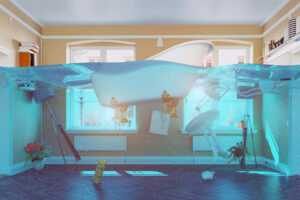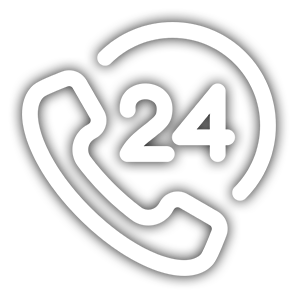Preventing Water Damage In The Bathroom
 Water damage can occur in any room in the house, but a bathroom is one room that is more prone to it on account of its high water usage. All the appliances built into the bathroom require the use of running water, and, because of that, there is a high risk of water damage. There are a lot of opportunities for appliances to malfunction, such as in the toilet, sink, shower, and tub, pipes, and fittings can leak, as well as accidental overflows. Moreover, humidity is a huge culprit of water damage that is often overlooked.
Water damage can occur in any room in the house, but a bathroom is one room that is more prone to it on account of its high water usage. All the appliances built into the bathroom require the use of running water, and, because of that, there is a high risk of water damage. There are a lot of opportunities for appliances to malfunction, such as in the toilet, sink, shower, and tub, pipes, and fittings can leak, as well as accidental overflows. Moreover, humidity is a huge culprit of water damage that is often overlooked.
Sterling Heights – Water Damage Cleanup
Mold and mildew are encouraged to grow when moisture makes it into places they shouldn’t be, such as under the tub or between the shower liner and wall. This can eventually lead to wood rot in the walls and subfloor, softening them. If left to get worse, damage can get so severe that the floor or walls can give way. Because of this, it is detrimental to prevent this water damage from occurring in the first place.
Plumbing
Pipes are prone to breaking down, leaking, and even bursting. Over time, they begin to rust and don’t hold up as well as they used to. Knowing this, periodical pipe inspections should be done. Check on any valves in the bathroom as well as faucet supply lines under the vanities to ensure they are working properly and not leaking. Make sure none of the drains are clogged to prevent pipe bursting or water from coming back up.
Toilets
One of the most common reasons bathrooms need water damage cleanup is an overflowing toilet. To avoid the hassle and mess of a spilled toilet, don’t overwork the toilet. Never flush anything down the toilet that isn’t meant to be flushed, such as diapers, sanitary napkins, or tampons. These will ultimately clog the toilet or the entire plumbing system. If young children live in the home, be sure to keep an eye on them in the bathroom and teach them what does and doesn’t go in the toilet.
Additionally, be mindful of the level of the toilet bowl water. The most common reason for a low level is the fill tube is damaged or broken in some way, not allowing the toilet to fill all the way. In worse cases, the sewer line vent could be clogged or the toilet bowl is cracked. If the level is too high, this is an indicator that water cannot make it down, usually because of a clog somewhere.
Any of these problems that are not taken care of can lead to water damage over time.
Shower & Tub
Showers and tubs are other huge culprits in water damage in the bathroom. Regular checks will need to be done to ensure that no problems are happening under the radar. Grout and caulk are used in bathrooms mainly to keep water from getting to places it’s not meant to be. If they are cracked, chipped, or deteriorating, they will not do their job. This also applies to the tubs and sinks themselves. Even hairline cracks can allow water to seep through and cause water damage.
Shower curtains and doors are also there to prevent water from getting outside the tub. When they are damaged, water will leak through onto the floor. However, even if the door or liner properly seals water out, not cleaning up the water that drips from your body after getting out of the shower can also cause water damage. Even not drying excess water from the shower and tub can cause problems as well. Be sure that when using the shower or tub, the exhaust fans are always running to keep excess moisture out.
Unfortunately, you can’t always guarantee that water damage can be kept out. Sometimes, it is completely unpreventable. Because of that, there are professionals readily available to assist. On-site Cleaning is properly knowledgeable on water damage cleanup and will ensure a job well done.

